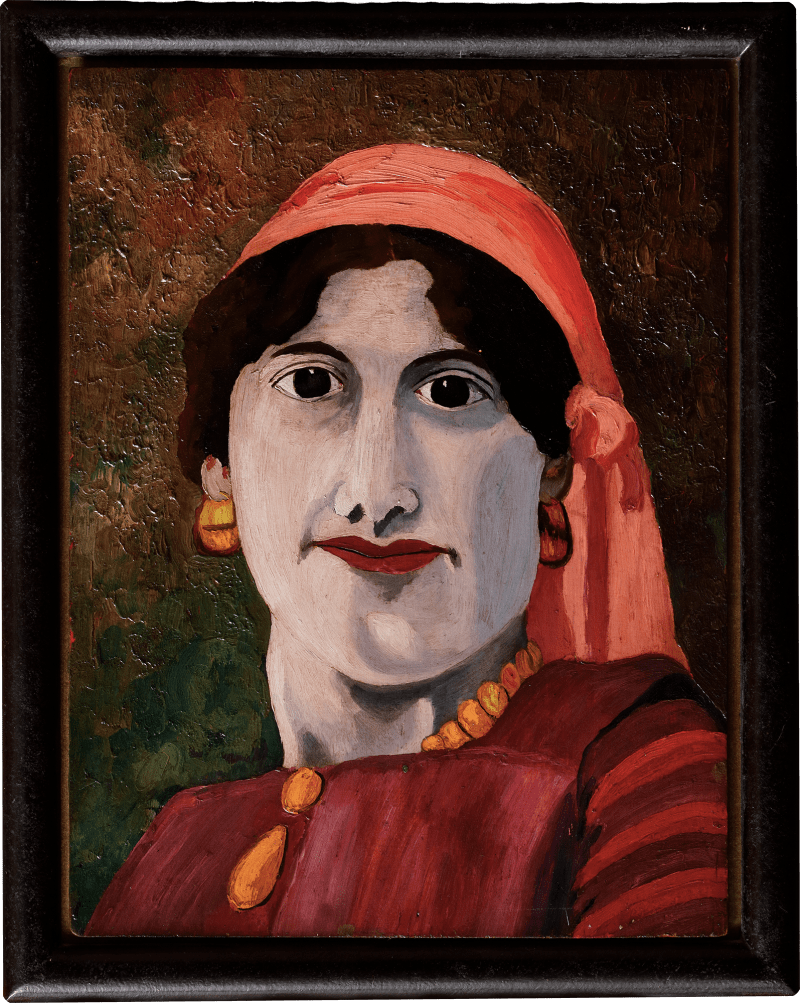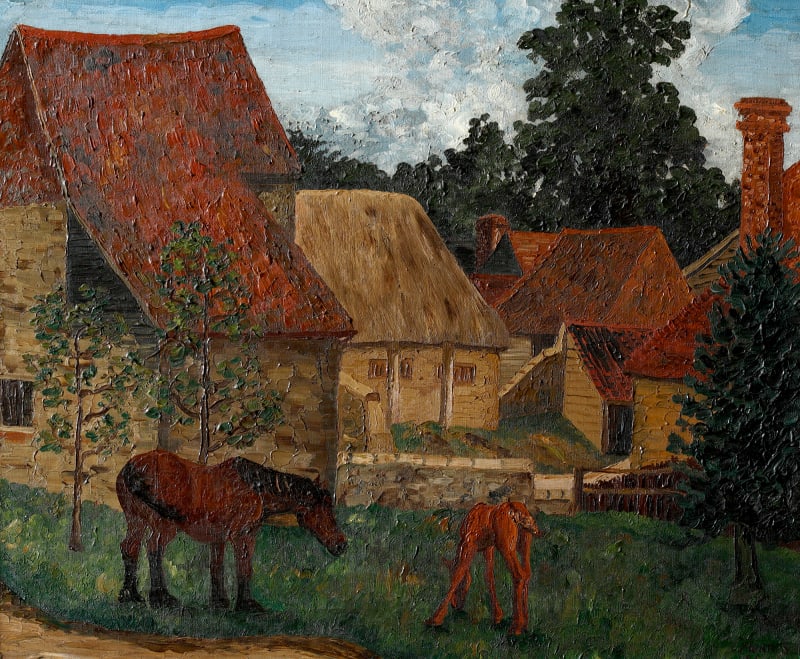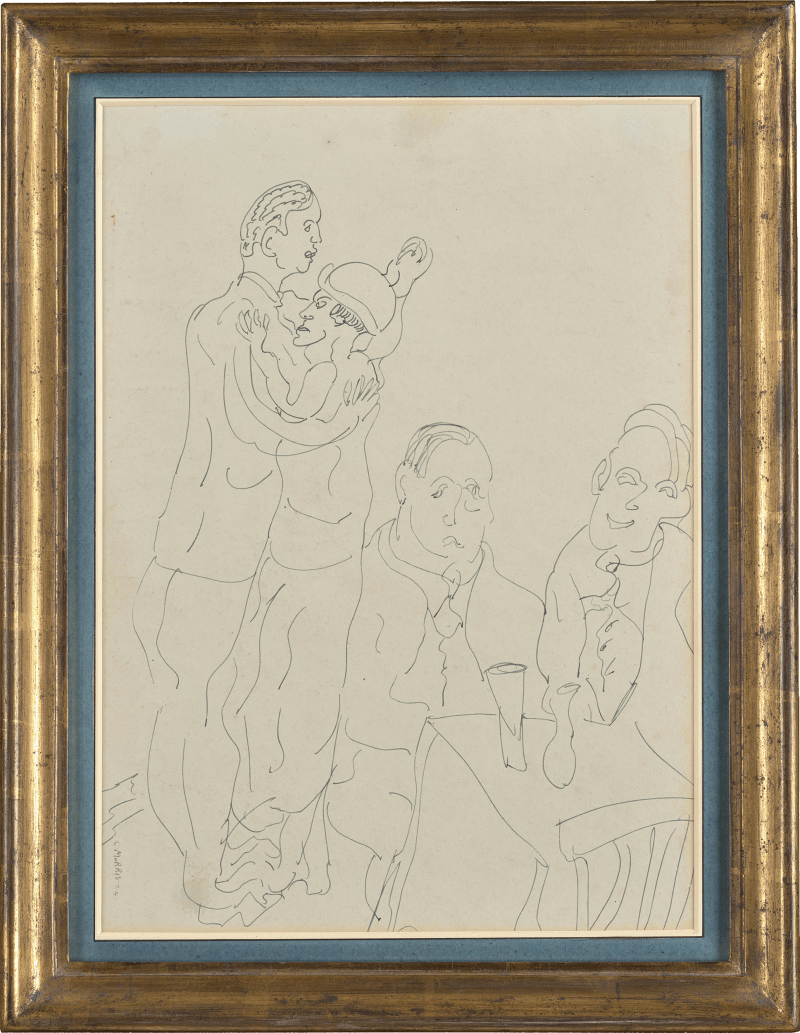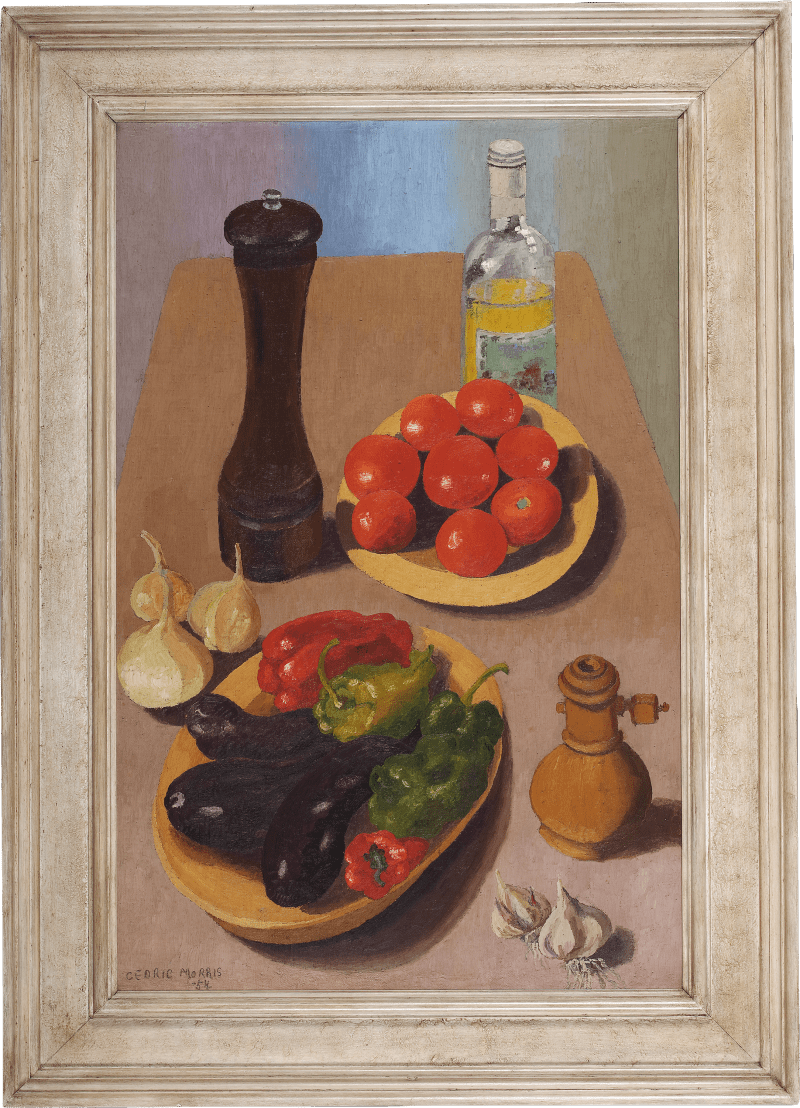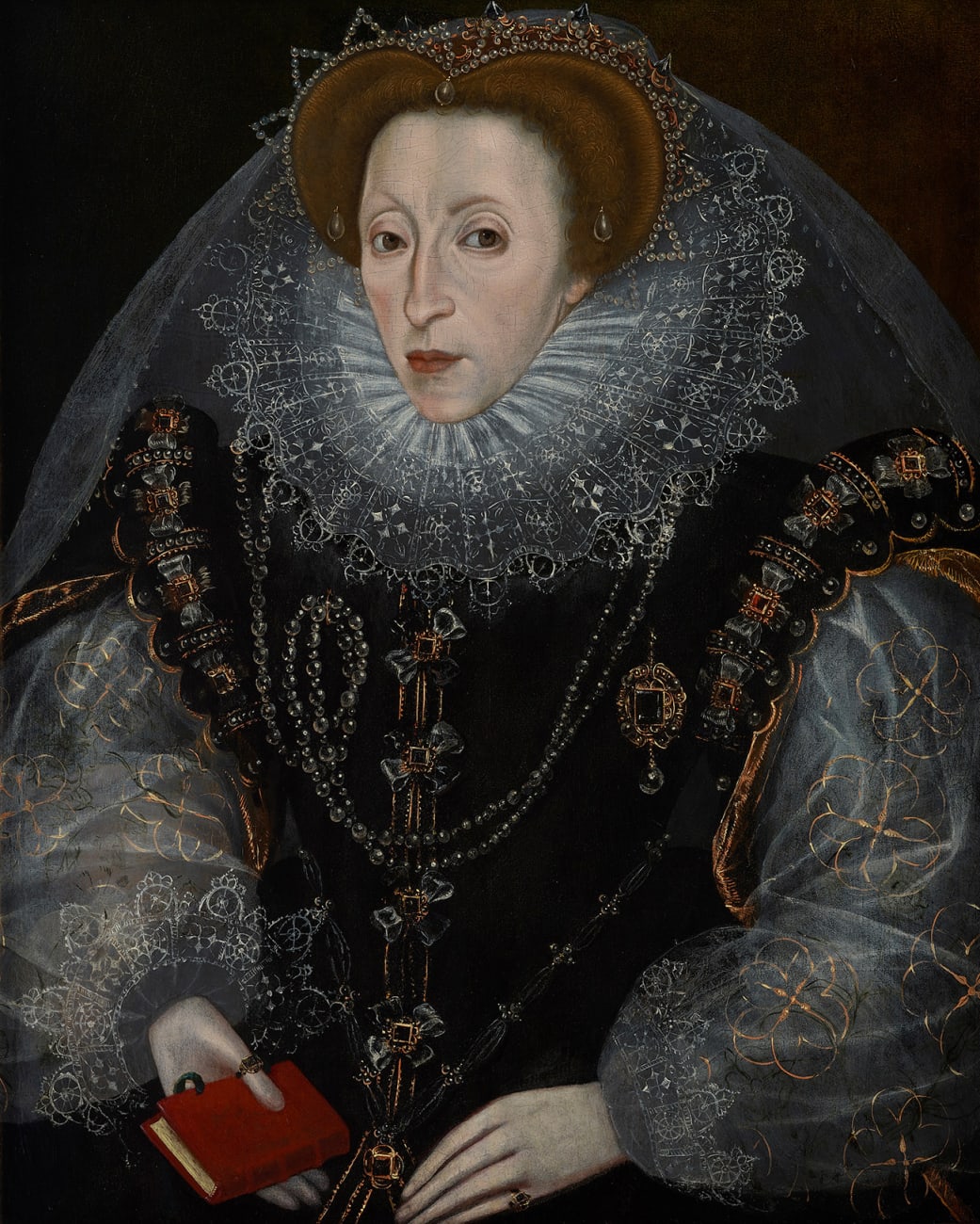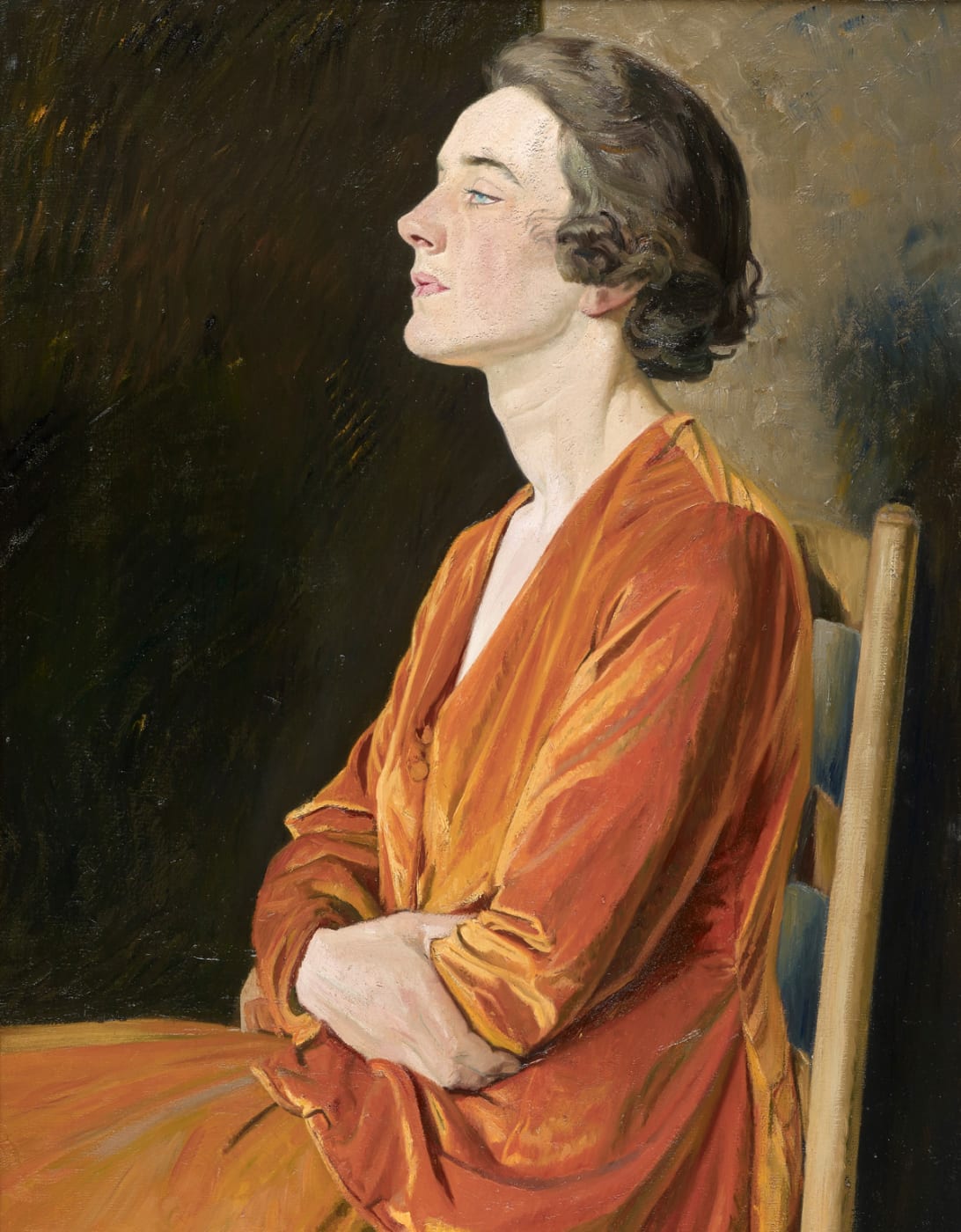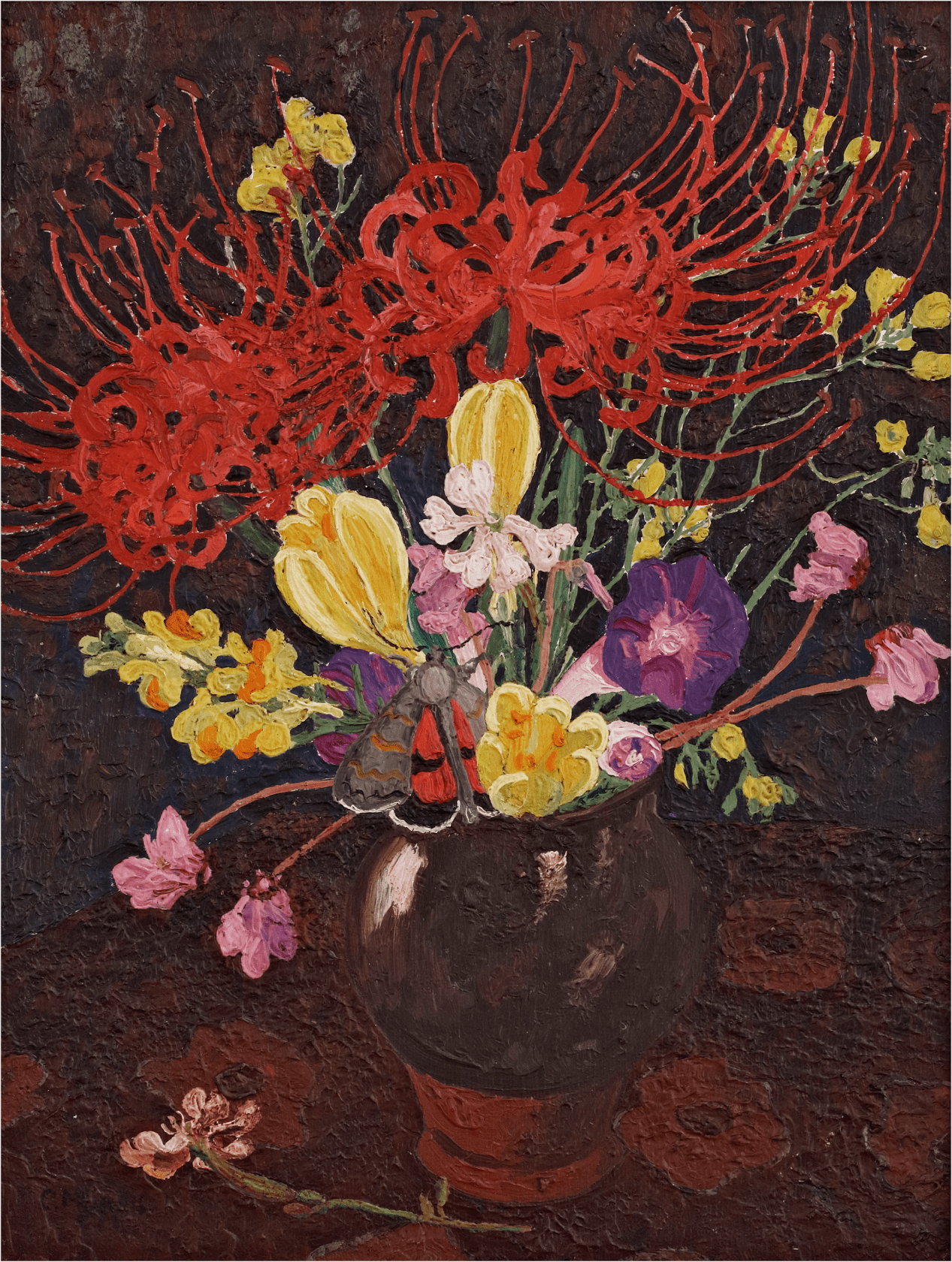
Cedric Morris
(1889-1982) Still-life with a red underwingProvenance
Mr. T. Kenny;
Christie’s, London, 7 June 2002, lot 80;
Acquired by Peter and Felicity Wakefield;
Thence by family descent until sold;
Sotheby’s, London, 30 June 2022, lot 234.
Literature
Lambirth, A. 2018. Cedric Morris: Artist Plantsman. London: The Garden Museum, p.48.
Exhibitions
Philip Mould Gallery, London, Garden to Canvas: Cedric Morris and Benton End, 18 May – 20 June 2025.
Cedric Morris’s deft understanding of colour and form is perfectly encapsulated in this striking still-life painted in the early 1930s. Rich in colour and intimate in scale, this work occupies an almost unique position within Morris’s oeuvre at this date and reflects his almost obsessive experimentation with the depiction of flora and fauna during these initial years of living in the countryside.
In early 1929 Morris and Arthur Lett-Haines acquired a lease on Pound Farm near Higham in Suffolk and the following year they gave up their studio in Great Ormond Street. Free from the shackles of city life, they transformed Pound Farm into an artist’s haven where wild animals roamed the gardens, and a series of low-hedged beds provided a constant source of inspiration for Morris’s still-life works. No longer reliant on succulents for subject matter, as he had been when living in London and Paris, it was in these early years at Pound Farm, surrounded by nature...
Cedric Morris’s deft understanding of colour and form is perfectly encapsulated in this striking still-life painted in the early 1930s. Rich in colour and intimate in scale, this work occupies an almost unique position within Morris’s oeuvre at this date and reflects his almost obsessive experimentation with the depiction of flora and fauna during these initial years of living in the countryside.
In early 1929 Morris and Arthur Lett-Haines acquired a lease on Pound Farm near Higham in Suffolk and the following year they gave up their studio in Great Ormond Street. Free from the shackles of city life, they transformed Pound Farm into an artist’s haven where wild animals roamed the gardens, and a series of low-hedged beds provided a constant source of inspiration for Morris’s still-life works. No longer reliant on succulents for subject matter, as he had been when living in London and Paris, it was in these early years at Pound Farm, surrounded by nature in all its forms, that Morris painted some of his most accomplished flower pieces.
In this work, a red underwing moth is nestled within a patchwork of colourful flowers. The upper quadrant of the composition is dominated by a sprawling red spider lily (Lycoris radiata), below which we see an arrangement of yellow toadflax (Linaria vulgaris) and yellow crocuses (Sternbergia Lutea). Delicate bursts of lilac ivy-leaved Cyclamen (Cyclamen Hederifolium) are dotted throughout with morning glory (Ipomoea purpurea) which blooms in the centre-right. Wispy strands of some sort of brassica, possibly rocket, navigate convoluted routes throughout the arrangement, which keeps the eye wandering across the surface of the work.
Painted with thick impasto, the present work exemplifies Morris’s sumptuous style of working in which movement and depth are created through undulating surface texture. Throughout his career, Morris remained loyal to this idiosyncratic approach and always preferred to use untinned oil paint, which he could manipulate and push, rather than brush or rub, onto the surface of his painting. To build up the thick opacity of his bold colours, he developed his own way of mixing paint, and made up his own zinc, mixing oxide of zinc and linseed oil in a jar.[1] Morris himself stated;
I’m very fond of using wet paint on wet paint, gradually working up to the edge (of the form of flowers) so that it’s rather pushed up.[2]
The present work was included in the seminal exhibition Cedric Morris: Artist Plantsman staged at The Garden Museum in London in 2018. It was the first exhibition to focus on Morris’s flower paintings since the Tate retrospective in 1984 and marked the start of a long-overdue period of reappraisal of Morris’s life and work which continues in various forms to this day.
[1] Neve, C. ‘A Painter and his Garden: Cedric Morris at Benton End’, Country Life, Vol. 165, (4271), May 17, 1979, p.1534.
[2] Morris, C. quoted in Neve, C. ‘A Painter and his Garden: Cedric Morris at Benton End’, Country Life, Vol. 165, (4271), May 17, 1979, p.1534.

